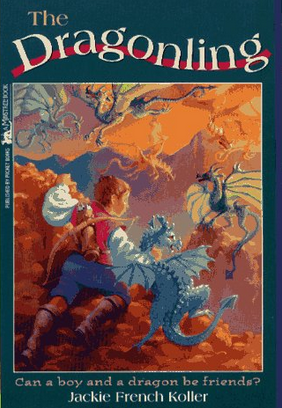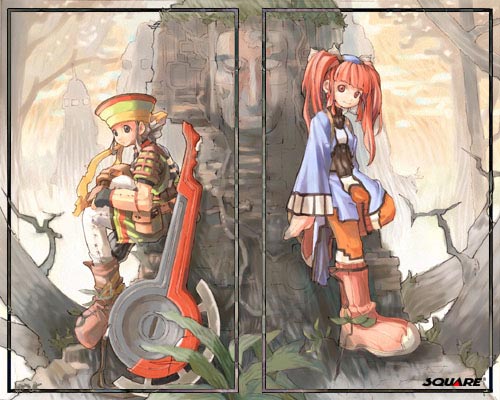

The title ‘Eye of the Dragon’ was immediately provocative to me, but it wasn’t until a later iteration of the story that it occurred to me to include an intentional eye motif in the story itself. The plot of this one was relatively straightforward, and it was a consistent problem of mine that my stories resolved much too quickly and were over after about 20 pages. Because it took so long for me to write the story by hand, I mistakenly had the impression that it was much longer than it actually was. Imagine my despair when, after handing the book to a relative of mine, it would be returned to me in about fifteen minutes. Granted, 20 pages for an eight year old isn’t bad, but the brevity of the story often caused me to feel that it wasn’t a proper story, that a better story by a better writer would be longer, would have more — what do you call em — details. My mom and dad would often reassure me that ‘quality is better than quantity,’ but I wasn't hearing it.
One thing that’s really funny to me about Eye of the Dragon is that the main character’s name has changed in every iteration, sometimes multiple times throughout a single iteration’s lifespan. In the original story, the protagonist’s name was Elijah, and you can bet he was named after Elijah Wood. If you were respectfully denying the obvious fact that the protagonist of this story would be anything other than a one-dimensional and painfully virtuous self-insert character, you are sorely mistaken.
The story wastes no time in kicking off the drama, beginning with Elijah in, I believe, his bedroom, waking up to his older sister, Katie — named after my dear cousin Katie, who I totally idolized — weepily proclaiming the terrible news that ‘Dragon Mountain has blown its top, and all the dragons that were trapped inside have now escaped!’
You sort of have to hand it to eight-your-old me for packing so much exposition into that punch. In one extremely terrible line of dialogue, Katie establishes that a) such a thing called Dragon Mountain b) has undergone an explosive event, resulting in c) the sudden liberation of dragons, who d) were previously ‘trapped’ inside of a volcano, and were probably not very happy about it.
The entire crisis of the story is established right there, and unfortunately it never occurred to me to go any deeper than that. Elijah, being the noble and courageous son of a bitch that he is, immediately takes upon himself the responsibility of embarking on a quest to put an end to the madness that has suddenly befallen his world. His parents and older sister protest, but their objection is futile, and they know it, because Elijah is just so evidently prepared and mature enough for the task ahead of him. I think Elijah is supposed to be 13 years old.
I believe in the original story, it is even remarked upon that Katie is a better archer than he is, and that she, being older, actually has more experience hunting and surviving on her own in the woods, but there exists some kind of rule in Elijah and Katie’s village that prohibits young women from adventuring until they legally come of age, which for women inexplicably occurs later than it does for men. I'm pretty sure that this contrivance was stolen from a story called The Dragonling, whose cover illustration is dear to me, and which began in a similar way, if I remember correctly. It would become crucial, in later iterations of the story, that Katie was originally denied the freedom to adventure that her younger brother freely possessed.

Anyway, Elijah eats his toast and is on his way.
At first he travels alone, and by foot, toward the ominous Dragon Mountain, a singularly tall, grey volcano jutting out high above the other equally jagged mountain peaks, complete with a perfect circle of smoke hovering just below its fiery mouth. Elijah has a bow and arrow slung around his back, and I believe a sword, although it is not a remarkable one. He definitely has a shield, and you can bet that I never once mention him using it. As depicted crudely on the cover of the original Eye of the Dragon (now lost), Elijah is wearing a red shirt — we can say ‘tunic’ to be generous, but I only knew how to draw t-shirts — blue pants — obviously jeans — and a red bandana. At the time, I was very fond of bandans, and I would often run around wearing them with my good friend Erin, who was similarly fond of them. We thought we were very cool. Oddly, Erin never made it into the story, despite her being a very close friend of mine.
Other real-life friends appear quite frequently in Eye of the Dragon, albeit with alter-egos. The most notable example is the character of Neona, based on a friend of mine who requested that her self-insert character be named Neona. At that age, it is common to write your friends into stories, and it is just as common for those friends to think nothing of it. I don’t think this friend really cared or remembered that she was a character in Eye of the Dragon, but when I imagined the inevitable blockbuster spinoff that I would film a year or two down the road, she was always going to be my first choice for the character of Neona. But Neona was also based on a character from Threads of Fate, an unsuccessful Squaresoft game that I played for many years exclusively in demo form from a Playstation Magazine Demo Disc.

Threads of Fate had a novel (for me at least) feature that allowed you to choose between two characters, Mint and Rue, and proceed through the game from their point of view. Each character’s POV is basically the same as the other’s, and the conclusion of the story changes depending on the chosen protagonist. This always frustrated me as a kid because I couldn’t tolerate two contradictory stories, and wanted both to be true. At any rate, it was obvious that Rue, the male character, was vastly superior and more interesting, and that his storyline, being deeper and moodier, was of much higher quality. But the female character, Mint, definitely influenced some of Neona’s character traits.

But, I mean, Neona wasn’t that complex. None of my characters were. Neona’s defining feature was that she was a spunky tomboy, who nevertheless adored Elijah, who remains pretty casual about the whole thing until the climax of the story, when they obviously kiss. In later iterations, Elijah becomes the one who harbors feelings of unrequited love for Neona, who in turn remains casual, and I guess this is a funny way that Little Me processed the fact that even though I like-iked the girl on which Neona was based, she totally like-liked someone else.
Anyway, Elijah meets Neona at a tavern or something. Or a library. Perhaps both. I could totally be inventing this part, or at the very least I don’t quite remember which iteration it’s from, but I’m pretty sure Elijah meets Neona when he enters the next village over from his. This village is named Christoba, and I should have you know it is definitely not as cool as Elijah’s village. This fact has no bearing on the plot, but Elijah’s village is named Carona, after the town in Threads of Fate, and Christoba is named thus because the prefix 'Chris' sounded sufficiently lame to me, and allowed me to privately establish the superiority of Elijah’s hometown. Don’t ask me why I did this. It had something to do with brand loyalty for Threads of Fate, or a desire to wink & nod at it without drawing too much attention to what I was doing. I lived very much inside my head.*1
At this point we’re already halfway of the way through the book.
So in Christoba, Elijah walks brazenly into a tavern and very publicly inquires about Dragon Mountain. The barkeep leans in and, in a hushed voice, tells him of a discreet section in the town’s library that contains the sort of information that he’s looking for. Neona, who is hanging out in the tavern for no other reason than to bask in her spunky rebelliousness, watches this event unfold and follows Elijah to the library in order to pin him against the wall and warn him of malicious forces, like spies or something, who would try to stop him if they found out that ‘a kid is trying to put all the dragons back into Dragon Mountain!’ Elijah immediately convinces her to join him and after a millisecond of hesitation, Neona embarks with him on his journey.
After that, they get to the Mountain in literally no time. Sure, they have to walk through a spooky, desolate forest —called Death Forest or something — but they don’t really encounter any obstacles. Before you know it, they’re at these gigantic doors at the base of Death Mountain. And you shouldn’t think too hard about the fact that Death Mountain is presented to the reader as a sheer rock face jutting out of some otherwise unremarkable dirt in an otherwise flat, desolate forest. I had never really seen a mountain before, at least none like Death Mountain, and my understanding of what forests even looked like was based on films and video games.
You’ll never believe it, but a poem is inscribed on the doors of Death Mountain. It goes like this:
Obviously the answer is Living Slime. Elijah triumphantly recalls the answer and the doors slowly open. This is probably the moment when Neona falls madly in love with him.
Once inside, they come across a totally empty hollow cavernesque room that spans the entirety of the mountain’s interior. Dragon Mountain itself is hollow, and it isn’t even particularly hot. The whole ‘volcano’ aspect of its geology was mysteriously dropped and never talked about again.
As the two behold this vast cavern in wonderment and awe, they are interrupted by a large gelatinous creature that inches toward them. Elijah the All-Wise recognizes this creature as living slime and tells Neona that the only way to survive an encounter with it is to be absolutely still. After a few moments of expert stillness, the slime crawls away and Elijah and Neona are free to move about the cavern. They ascend some interior stairs running along the side of the cavern wall, and come across a sort of rock outcropping or balcony.
At this point, I’m pretty sure that Elijah just presses a button and then all of the dragons are sucked back into Dragon Mountain. He remarks wistfully to Neona that it is sad how all of these creatures momentarily tasted freedom and then are whisked away back into a life of imprisonment inside of this volcano. In a later story, it is established that dragons can only die by murder, and do not die of old age, and so their imprisonment inside this mountain is literally eternal. Unfortunately, Elijah sees no problem with the fact that he is almost solely responsible for condemning all of these creatures to a life of imprisonment, I guess because they supposedly caused untold destruction.
I guess I lied earlier, because I don’t think that Elijah and Neona kiss. At that point in my life, I was way more interested in depicting two companions gazing wide-eyed out at something profound together. This really ought not to come as a surprise to you for a number of reasons.
The end, I guess.